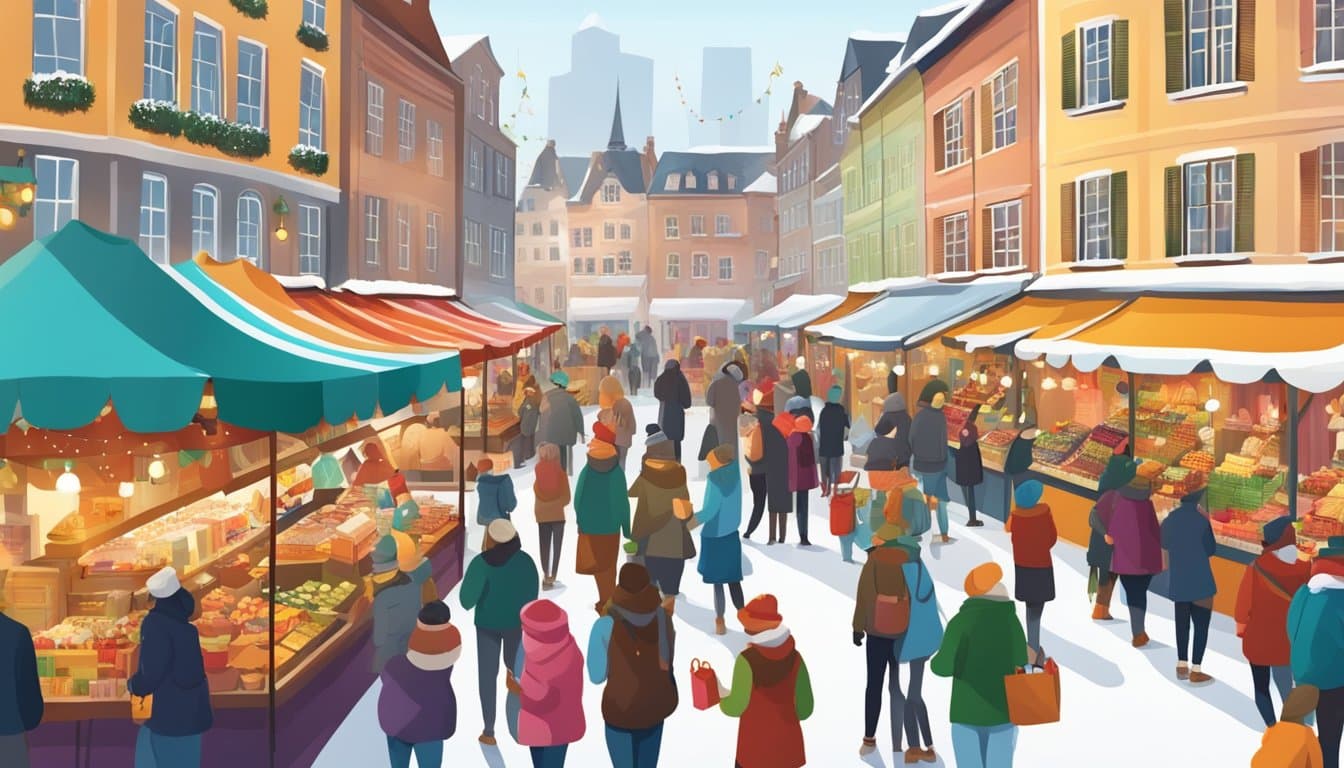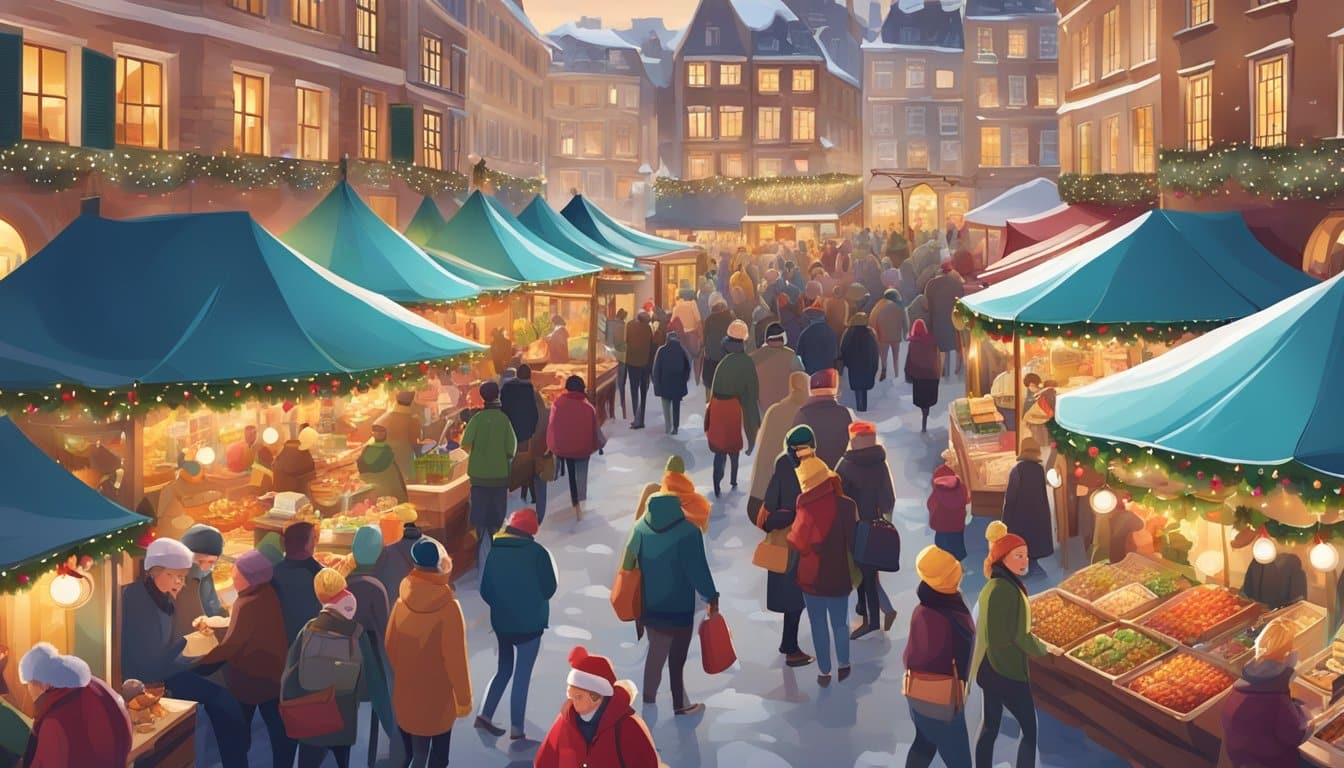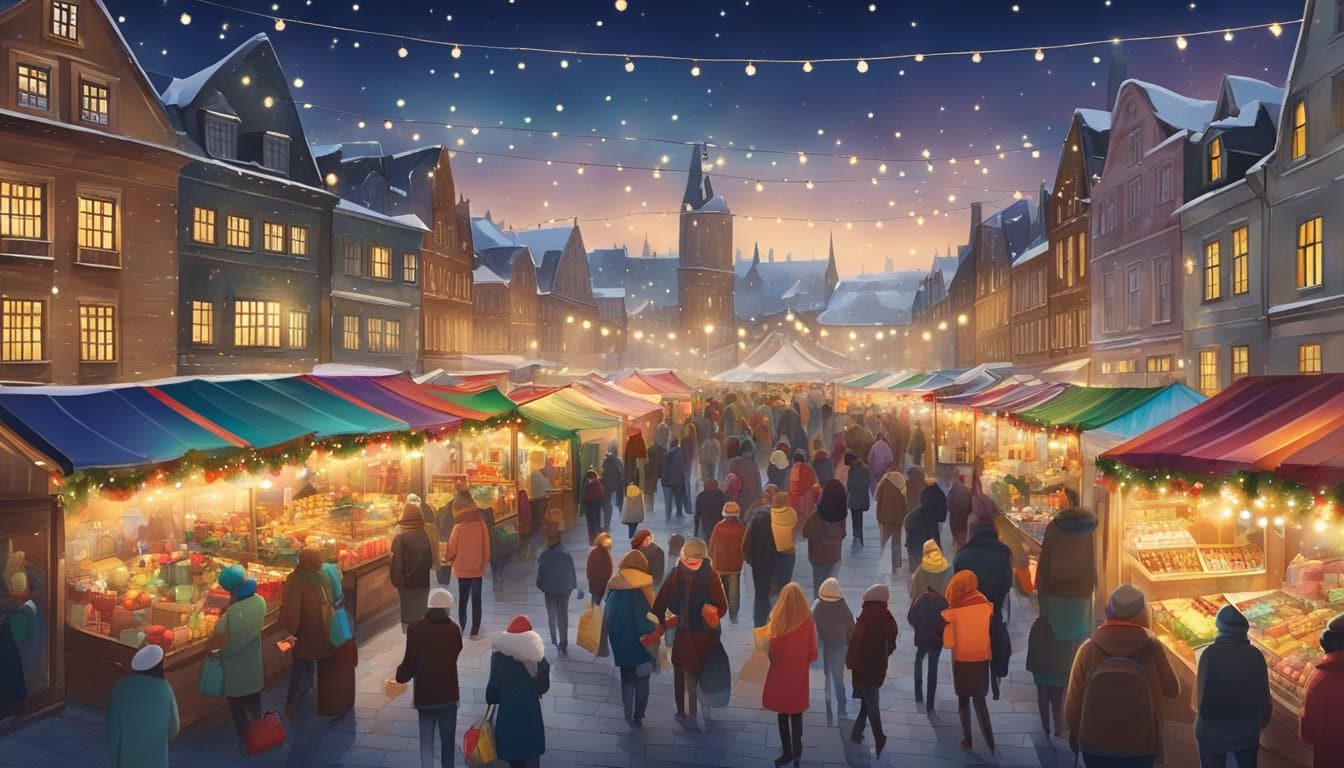Understanding the Cultural Significance of Christmas Markets: A Festive Tradition Explained
When the holiday season arrives, one of the most enchanting traditions is the Christmas market. These markets have a fascinating history. Christmas markets are not just a retail event but a vibrant tapestry of cultural significance that fosters community spirit and celebrates heritage.

As you stroll through the lively stalls, you’ll find yourself surrounded by traditions that have been passed down for centuries.
For example, in Germany, Christmas markets are considered a deeply rooted tradition, reflecting the region’s rich cultural history. These markets bring together people from all walks of life, creating a sense of community and social cohesion.
The atmosphere of a Christmas market is hard to beat. From the spiced aroma of mulled wine to the twinkling lights and festive music, these markets capture the holiday spirit in a way that few other events can. They preserve cultural heritage while boosting local economies, making them a cherished holiday tradition around the world.
Table of Contents
- 1 Historical Origins Of Christmas Markets
- 2 Traditions And Customs Of Christmas Markets
- 3 Community And Social Cohesion
- 4 Preservation Of Cultural Heritage
- 5 Economic And Commercial Impact
- 6 Contributions To The Holiday Spirit
- 7 Frequently Asked Questions
- 7.1 Why are Christmas markets an important tradition in Germany?
- 7.2 What historical events led to the development of Christmas markets?
- 7.3 Which customs are commonly observed at Christmas markets across Europe?
- 7.4 What makes a Christmas market in Europe considered among the best?
- 7.5 How do Christmas markets contribute to local cultural values?
- 7.6 Which is considered the largest Christmas market around the globe, and why?
Key Takeaways
- Christmas markets celebrate cultural heritage and community.
- They have historical roots dating back to the 13th century.
- These markets enhance the holiday spirit and support local economies.
Historical Origins Of Christmas Markets

Christmas markets have deep historical roots in Europe, particularly in Germany, and have spread to various parts of the world, including America. These markets have evolved over the centuries, adapting to the cultural contexts of different regions.
Find the best accommodations and airfares
Check availability at 5* hotels, guest houses and apartments rated "superb" or "exceptional" by visitors just like you.
NO RESERVATION FEES
CHECK AVAILABILITY FOR YOUR DATES HERE
European Roots Of Christmas Markets
The origins of Christmas markets can be traced back to medieval Europe. The earliest known reference dates to 1296 in Vienna, where Duke Albrecht I authorized a 14-day fair in December. These early markets were known for selling goods needed for winter.
Germany became a central hub for Christmas markets. Notable examples include the market in Dresden, which started in 1434. This market, known as Striezelmarkt, initially lasted just one day on Christmas Eve. Other cities like Frankfurt, Munich, and Nuremberg quickly followed suit.
These markets became key social and economic events, where people gathered to buy seasonal goods, enjoy festive foods, and celebrate. The traditional stalls sold handmade crafts, sweets, and decorations, turning these markets into integral parts of local culture.
The Spread To America
Christmas markets crossed the Atlantic and arrived in America through European immigrants. In the early 19th century, German immigrants brought their customs, including the concept of holiday markets.
Cities with significant German populations, such as Cincinnati and Chicago, established vibrant Christmas markets. The Christkindlmarket in Chicago, which started in 1996, is modeled after the market in Nuremberg. These markets became popular spots for embracing German holiday traditions.
As these markets spread, they began to include more local traditions, blending European roots with American culture. They maintained the charm of original German Christmas markets while incorporating American holiday customs like Santa Claus and pumpkin pie.
Early American Adaptations
In America, Christmas markets adapted to local cultures and tastes.
Early markets in cities like Halle and New York started to emphasize a mix of German and American holiday traditions.
Food vendors offered a combination of traditional German foods like bratwurst and newer American favorites. Handmade crafts and decorations remained central, but local artisans began to make items that reflected American holiday styles.
These adaptations allowed Christmas markets to thrive in their new settings. By incorporating local traditions and customs while retaining their European roots, these markets continue to be cherished holiday attractions in the United States.
Traditions And Customs Of Christmas Markets

Christmas markets are known for their festive atmosphere and cultural richness. They offer unique experiences through their various attractions, regional customs, and the special role of local artisans and handcrafted goods.
Common Features And Attractions
At Christmas markets, you’ll often find glühwein (mulled wine) and bratwurst stands adding warmth to chilly evenings.
The markets are famous for their stunning Christmas trees and nativity scenes.
Sweets, toys, and decorations are popular gifts.
You’ll also encounter beautifully decorated stalls selling roasted chestnuts, candles, and traditional holiday fare.
Performance areas may feature holiday music and shows, making the experience even more magical.
Unique Traditions In Different Regions
Germany’s Dresden Striezelmarkt is one of the oldest, dating back to 1434. It’s famous for its Stollen cake and vibrant festival lights.
In Nuremberg, the Christkindlesmarkt is known for its angelic “Christkind” who opens the market.
Berlin’s various markets offer diverse themes, from Nordic Christmas to historical reenactments.
The Strassburg market in France also boasts scenic lights and artisanal wares.
Vienna’s December markets are cherished for their opera performances and elegant ambiance.
Each market reflects the region’s unique culture and history, making visiting different markets a delightful exploration.
The Role Of Handcrafted Goods And Local Artisans
Handcrafted goods are a highlight. Artisans showcase turnery, dolls, and Spielzeugmessen (toy fairs).
Buying these unique items supports local craftspeople and ensures high-quality, one-of-a-kind gifts.
Candles, handmade Christmas decorations, and detailed nativity scenes evoke the essence of the holiday.
These items often symbolize the region’s history and craftsmanship.
Artists and craftspeople put their heart into creating intricate handicrafts and festive decorations that embody the spirit of Christmas.
Supporting them not only provides you with memorable souvenirs but also sustains traditional arts.

Christmas markets play a vital role in fostering community ties and social bonds. They provide settings that encourage connection, nostalgia, and mutual support, enriching the lives of everyone involved.
Bringing Communities Together
Christmas markets act as meeting points for people of all ages. The festive atmosphere, adorned with twinkling lights and traditional decorations, creates a sense of belonging.
Hosting these markets near medieval cathedrals or ancient roman ruins adds historical charm, enhancing the experiential component for visitors.
You often find local artisans and vendors sharing their crafts, helping to support local businesses. This fosters a spirit of cooperation and shared experiences, making the market a hub of communal activity.
Events might include winter wonderlands with ice skating or simple traditions like lighting a Christmas tree. It’s a place where strangers become friends, united by the joy of the season.
Family-Friendly Activities And Entertainment
Christmas markets cater to families, offering a variety of family-friendly activities and entertainment.
You can enjoy nostalgic delights such as merry-go-rounds, puppet shows, and live music, evoking pleasant childhood memories.
Many markets feature themed attractions, like Santa’s workshops or miniature train rides, delighting children and grown-ups alike.
Food stalls serve treats ranging from gingerbread to hot cocoa, making it easy to spend an entire day immersed in the festive spirit.
Evening performances often include carol singing, theater productions, and sometimes even parades. These activities encourage families to spend quality time together, creating lasting memories.
The Role Of Volunteers And Local Organizations
Volunteers and local organizations play crucial roles in supporting Christmas markets.
They contribute time and effort to set up stalls, manage events, and ensure everything runs smoothly.
Many volunteers are motivated by the desire to give back to their community, making each market a truly community-driven endeavor.
Local charities often participate, using the market as a platform to raise awareness and funds. Schools and community groups showcase their talents through performances and crafts. This active involvement strengthens social bonds and fosters a sense of joint achievement, giving everyone a stake in the market’s success.
Preservation Of Cultural Heritage

Christmas markets are a beautiful example of preserving cultural heritage. They showcase diverse influences, traditional foods, and performances that keep the spirit of the season alive.
Influences Of Immigrant Cultures
Immigrants have played a significant role in shaping the character of Christmas markets. As people moved across borders, they brought their unique traditions and practices. This blend of cultures can be seen in the variety of crafts, decorations, and goods available at these markets.
For example, you might find beautiful Polish ornaments next to Italian nativity scenes. This adds a rich layer of diversity and authenticity, making each market a unique experience. The cultural exchange fosters a sense of community and appreciation for different heritages.
Traditional Foods And Recipes
Food is a big part of the Christmas market experience. Traditional dishes and recipes are passed down through generations, preserving the cultural legacy.
At a German Christmas market, you might enjoy Bratwurst or Lebkuchen. Each bite connects you to centuries of tradition.
The preparation methods and ingredients remain true to their roots. Whether it’s mulled wine heated in large pots or handmade sweets, these foods are more than just tasty treats. They serve as a reminder of the past and a way to celebrate cultural heritage.
Storytelling And Cultural Performances
Storytelling and performances are central to preserving cultural heritage within Christmas markets. These activities celebrate the stories and traditions that define the season.
These performances are not just for entertainment; they are vital in passing down traditions. By witnessing these stories and participating in these rituals, you are helping to keep these customs alive. Cultural performances make history come alive and create lasting memories for all who attend.
Economic And Commercial Impact

Christmas markets bring significant economic benefits. From boosting local businesses to providing seasonal employment and revitalizing host cities, these markets play a vital role in regional development.
Support For Local Businesses
Christmas markets offer a unique platform for local businesses to showcase their products. These markets draw large crowds, which translates into more sales for vendors. Many businesses report an increase in revenue during the holiday season.
Local artisans, food vendors, and craftsmen find a perfect opportunity to reach a broader audience. The increased foot traffic helps them not only sell more but also gain loyal customers. The perceived value of attending these events enhances their reputation and customer base.
Seasonal Employment Opportunities
The holiday season is a time when many people are looking for extra work. Christmas markets create numerous seasonal jobs, from setting up stalls to selling goods.
These jobs are crucial for students and part-time workers who need to earn some extra money.
In cities like London, the influx of tourists looking for unique holiday experiences means more hands are needed. This increases not just regular employment but also temporary jobs, which can be a lifesaver during the holidays. Seasonal workers benefit from the festive atmosphere and the sense of community these markets create.
Economic Boost For Host Cities
Hosting a Christmas market brings a notable economic boost to the city. The increased tourism drives consumption in hotels, restaurants, and local attractions.
When cities like Meran host these markets, the local economy thrives due to the sheer number of visitors.
On platforms like TripAdvisor, reviews often highlight the positive experiences, encouraging more people to visit. This global awareness contributes to the city’s perceived value, making it a popular destination during the festive season. Hosting Christmas markets effectively leverages the consumption-oriented foundations that benefit the city’s overall economic development.
Contributions To The Holiday Spirit
Christmas markets are vibrant and full of life, enhancing the holiday spirit through various unique elements. From the sparkling decorations to the lively performances and themed nights, each aspect adds to the magical ambiance of the season.
Festive Decorations And Ambiance
Christmas markets are known for their stunning decorations. Colorful lights and beautifully decorated trees transform public spaces into winter wonderlands.
At every turn, you’ll find stalls adorned with garlands, ribbons, and ornaments, creating a cheerful and inviting atmosphere.
The visual appeal is one of the most important aspects. In many markets, artists create intricate ice sculptures. Additionally, various displays often highlight local craftsmanship and artistic flair, making each market unique.
Music, Dance, And Theatre Performances
Live performances play a crucial role in adding to the festive spirit.
At many markets, you can hear live music, including traditional carols and modern songs. Local musicians and choirs often perform throughout the day and evening.
These events also include dance and theater performances. You might catch a local ballet company putting on a short version of The Nutcracker. Sometimes, street performers and actors create lively, spontaneous shows that entertain crowds and keep the holiday mood high.
Special Events And Themed Nights
Many Christmas markets host special events that draw even larger crowds. These can range from ice-skating shows to firework displays.
Themed nights are a big hit as well. You might find a medieval night where everyone dresses in old-fashioned clothing or a fairy tale night with characters like Santa Claus and elves walking around.
These events often include interactive activities for families. Kids can enjoy carousel rides or meet Santa, while adults might participate in themed contests or tastings. Overall, these special nights make the market experience even more magical and memorable.
Frequently Asked Questions
Christmas markets offer a rich tapestry of cultural traditions, historical significance, and unique customs that contribute to their charm and popularity. They hold a special place in society, reflecting both local heritage and broader cultural values.
Why are Christmas markets an important tradition in Germany?
Christmas markets are deeply rooted in German culture. They provide a festive atmosphere, celebrating the holiday season. Markets like Dresden’s, which dates back to 1434, offer historic charm and a sense of continuity through centuries.
What historical events led to the development of Christmas markets?
The origins of Christmas markets can be traced back to medieval Europe. Some, like those in Germany, began as early as the 15th century. King Wenceslaus IV played a role in promoting markets that allowed seasonal goods to be sold before winter.
Which customs are commonly observed at Christmas markets across Europe?
You’ll find a variety of customs at European Christmas markets. Common traditions include drinking mulled wine, enjoying roasted chestnuts, and shopping for handmade crafts and ornaments. Each market offers its unique local twist, reflecting regional cultures and tastes.
What makes a Christmas market in Europe considered among the best?
The best Christmas markets blend historic charm with festive ambiance. Markets in cities like Salzburg, known for their enchanting settings and historic sites, stand out. Authenticity, variety of vendors, and the quality of food and crafts also contribute to their reputation.
How do Christmas markets contribute to local cultural values?
Christmas markets strengthen community ties and cultural heritage. They promote local crafts and foods, supporting small businesses. Events like these help maintain cultural traditions and encourage interaction among different cultural groups. They are a testament to the community’s resilience and creativity.
Which is considered the largest Christmas market around the globe, and why?
The largest Christmas market is often considered to be in Nuremberg, Germany. It attracts over two million visitors each year. Known for its extensive array of stalls and festive activities, the market’s size, variety, and historical significance make it a standout.
Christmas Market Closures
Due to econonic conditions and tariffs, some Christmas Markets may cancel their events due to lack of vendors. If you are aware of a closed market,or find errors on a listing or an image, please reach out on our Contact Us page so that we may update this post.




